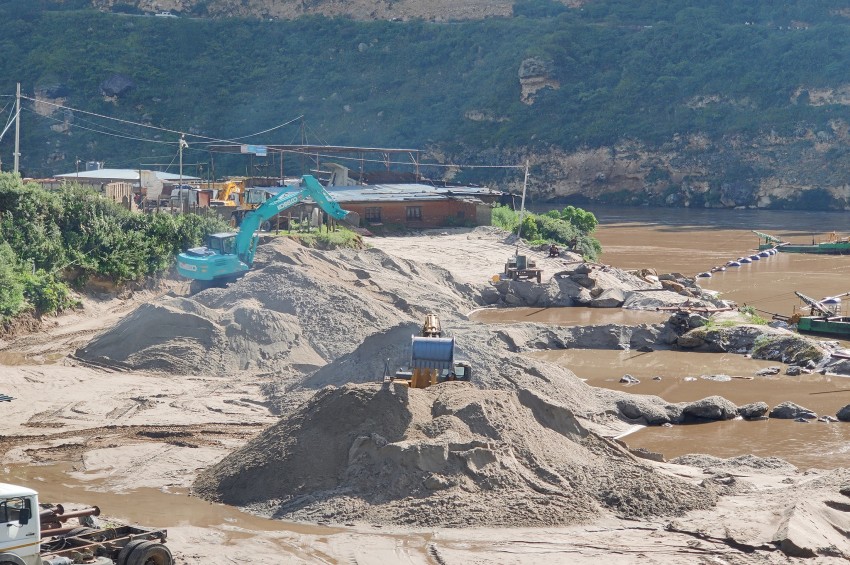Observers say NRDCL has no authority and almost like a contractor of the Department of Forest (DoF)
One of the main reports of the Public Accounts Committee (PAC) presented and discussed in the Parliament on June 30, was a review report on the performance audit report on operations of the Natural Resources Development Corporation Limited (NRDCL). The committee pointed out deficiencies, such as inconsistencies in the mandate, inadequacies in the Natural Resources Pricing Committee (NRPC) and others. Additionally, recommendations were put forth. However, from the discussions that ensued in the august hall and even the report, observers say that policy makers and some legislators do not seem to understand what NRDCL is and the scores of impediments that do not permit it to function efficiently, especially lack of authority.
NRDCL was one of the first institutions established after His Majesty the King was enthroned in 2006, through an executive order, to make natural resources “available, affordable and accessible to the general public.” “The prices of resources to build a house was very expensive. One day, I heard that something called NRDCL was established and costs would decrease. I thought it was just another story from the government, but it happened and we are very grateful to His Majesty the King,” Tshering Dorji, a building owner in Thimphu reminisces. He further added that this helped lower cost of government constructions too, as the rates of natural resources, especially sand was brought down.
However, NRDCL, as mentioned by the PAC report is today faced with the “duality of mandates (social and commercial),” which the report says has made NRDCL unable to achieve its optimal commercial interests. A deficiency the report says are “inconsistencies in the mandates as inferred from Charter, Executive Orders and Objectives of Article of Incorporation that may potentially impede performance and delivery of legitimate mandates.” This is exactly what those who have dealt with NRDCL say is a major problem. The Druk Holdings and Investments (DHI) provides NRDCL with a commercial target. “The social mandate from the executive order is very clear and if the commercial target is not met, there are consequences in terms of bonuses etc. Which direction should NRDCL follow,” a contractor questioned, adding most state owned enterprises with social mandates, face the dilemma.
While the paper could not contact relevant NRDCL officials to comment, Tandin Wangchuk, currently building a house in Thimphu said he was surprised to find out a “rule that has no basis.” “It concerns timber and I went to the NRDCL depot looking for sawn timber. They didn’t have any. I asked for log forms, which I couldn’t get,” Tandin says. “I then talked with people who know about NRDCL and was shocked to find out that NRDCL is nothing but like a contractor of the Department of Forest,” he said. According to Tandin, NRDCL has no authority, in essence. It gets clearance from the DoF, builds roads and even bridges for timber harvesting and does it in a very scientific way. “The logs harvested are divided – 50 percent for the wood based industries and 50 percent for NRDCL. But without ‘permission’ from the DoF, NRDCL cannot sell anything. Is it not ridiculous,” he questioned, saying after all the work is done, ownership is taken by a different agency. “NRDCL also invests in logging equipment which are very expensive. It is meant for scientific logging and I found that for supply of sawn timber, NRDCL was denied clearances by the department to establish sawmills. For the benefit of the country, the ownership by DoF should be stopped. NRDCL should be given authority. This is one very important provision that should be changed,” he said.
Though the PAC has recommended to “review Timber Extraction and Distribution Modality (TEDM), 2017 to enable NRDCL as a sole distributor of timber (log form) in the country,” he says that if the DoF is there, the rooms for improvement are little. He mentioned that with such rules NRDCL fulfil its dual roles. “The PAC has not come up with the authority that NRDCL requires,” he said.
On PAC’s remarks that “NRPC fixing of prices of natural resources shows inadequacies in terms of process, and methods of fixing prices as well as system of functioning of the committee,” a civil servant said it should be left to the market forces. “I do not understand on what basis and how prices are fixed on precious natural resources,” he said. He underlined that in “some ways,” NRDCL has not been able to communicate well. “For instance, the current rise in sand prices is due to increase in transportation charges. But people feel that NRDCL has increased sand price,” he said.
Meanwhile a Thimphu resident watching the discussions said “elected leaders should be aware of an institution’s history and how activities are conducted.” This remark was made on a member of parliament saying that if NRDCL can harvest only 30 percent of timber, it shows NRDCL’s weaknesses. “He did not know that the DoF permits NRDCL to harvest only 30 percent. If you don’t know you should remain quiet,” he said. Total volume of timber extracted by NRDCL constitute 30% only. Rest 70% constitute direct approval accorded by Department of Forestry and Park Services (DoFPS) in standing form for rural use.
The PAC report contained other social mandates that NRDCL is involved in, such as construction of roads; initiating the Green Compensatory Plantation Program in collaboration with its sister companies besides the normal plantation activities and others. It also highlighted that the investment decision based on the then Government Executive Order 2010 to establish crushing plants in different locations་ had adverse impact on the profitability of the company through 2011-2019, which incurred accumulated loss of Nu.244 million.
The Committees’ findings concerned lack of compliance monitoring and transparency found in the timber pricing. “Public are unaware about the rates fixed by the Natural Resource Pricing Committee (NRPC),” it said. The committee has further mentioned that in terms of extraction of timber, the NRDCL operates only around 30% of the total timber allotted annually for extraction, out of which 50% is supplied to Association of Wood Based Industries (AWBI). “The 50% supplied to AWBI is distributed among its members which is represented by 111 wood-based industries but does not represent all license holders (saw millers),” it says and also mentions that due to duality of mandates (social and commercial) NRDCL has not been able to achieve its optimal commercial interests.
It recommended the Ministry of Agriculture and Forests to review, enforce and monitor the NRPC rates and raise awareness to the consumers. A recommendation to review Timber Extraction and Distribution Modality (TEDM), 2017 to enable NRDCL as a sole distributor of timber (log form) in the country was also made. It also said that NRDCL should operationalize its Corporate Strategic Plan (CSP) through annual plans and enhance robust control measures and formalize the Enterprise Resource Planning (ERP) system to optimize cost efficiency and productivity.
One of the main reports of the Public Accounts Committee (PAC) presented and discussed in the Parliament on June 30, was a review report on the performance audit report on operations of the Natural Resources Development Corporation Limited (NRDCL). The committee pointed out deficiencies, such as inconsistencies in the mandate, inadequacies in the Natural Resources Pricing Committee (NRPC) and others. Additionally, recommendations were put forth. However, from the discussions that ensued in the august hall and even the report, observers say that policy makers and some legislators do not seem to understand what NRDCL is and the scores of impediments that do not permit it to function efficiently, especially lack of authority.
NRDCL was one of the first institutions established after His Majesty the King was enthroned in 2006, through an executive order, to make natural resources “available, affordable and accessible to the general public.” “The prices of resources to build a house was very expensive. One day, I heard that something called NRDCL was established and costs would decrease. I thought it was just another story from the government, but it happened and we are very grateful to His Majesty the King,” Tshering Dorji, a building owner in Thimphu reminisces. He further added that this helped lower cost of government constructions too, as the rates of natural resources, especially sand was brought down.
However, NRDCL, as mentioned by the PAC report is today faced with the “duality of mandates (social and commercial),” which the report says has made NRDCL unable to achieve its optimal commercial interests. A deficiency the report says are “inconsistencies in the mandates as inferred from Charter, Executive Orders and Objectives of Article of Incorporation that may potentially impede performance and delivery of legitimate mandates.” This is exactly what those who have dealt with NRDCL say is a major problem. The Druk Holdings and Investments (DHI) provides NRDCL with a commercial target. “The social mandate from the executive order is very clear and if the commercial target is not met, there are consequences in terms of bonuses etc. Which direction should NRDCL follow,” a contractor questioned, adding most state owned enterprises with social mandates, face the dilemma.
While the paper could not contact relevant NRDCL officials to comment, Tandin Wangchuk, currently building a house in Thimphu said he was surprised to find out a “rule that has no basis.” “It concerns timber and I went to the NRDCL depot looking for sawn timber. They didn’t have any. I asked for log forms, which I couldn’t get,” Tandin says. “I then talked with people who know about NRDCL and was shocked to find out that NRDCL is nothing but like a contractor of the Department of Forest,” he said. According to Tandin, NRDCL has no authority, in essence. It gets clearance from the DoF, builds roads and even bridges for timber harvesting and does it in a very scientific way. “The logs harvested are divided – 50 percent for the wood based industries and 50 percent for NRDCL. But without ‘permission’ from the DoF, NRDCL cannot sell anything. Is it not ridiculous,” he questioned, saying after all the work is done, ownership is taken by a different agency. “NRDCL also invests in logging equipment which are very expensive. It is meant for scientific logging and I found that for supply of sawn timber, NRDCL was denied clearances by the department to establish sawmills. For the benefit of the country, the ownership by DoF should be stopped. NRDCL should be given authority. This is one very important provision that should be changed,” he said.
Though the PAC has recommended to “review Timber Extraction and Distribution Modality (TEDM), 2017 to enable NRDCL as a sole distributor of timber (log form) in the country,” he says that if the DoF is there, the rooms for improvement are little. He mentioned that with such rules NRDCL fulfil its dual roles. “The PAC has not come up with the authority that NRDCL requires,” he said.
On PAC’s remarks that “NRPC fixing of prices of natural resources shows inadequacies in terms of process, and methods of fixing prices as well as system of functioning of the committee,” a civil servant said it should be left to the market forces. “I do not understand on what basis and how prices are fixed on precious natural resources,” he said. He underlined that in “some ways,” NRDCL has not been able to communicate well. “For instance, the current rise in sand prices is due to increase in transportation charges. But people feel that NRDCL has increased sand price,” he said.
Meanwhile a Thimphu resident watching the discussions said “elected leaders should be aware of an institution’s history and how activities are conducted.” This remark was made on a member of parliament saying that if NRDCL can harvest only 30 percent of timber, it shows NRDCL’s weaknesses. “He did not know that the DoF permits NRDCL to harvest only 30 percent. If you don’t know you should remain quiet,” he said. Total volume of timber extracted by NRDCL constitute 30% only. Rest 70% constitute direct approval accorded by Department of Forestry and Park Services (DoFPS) in standing form for rural use.
The PAC report contained other social mandates that NRDCL is involved in, such as construction of roads; initiating the Green Compensatory Plantation Program in collaboration with its sister companies besides the normal plantation activities and others. It also highlighted that the investment decision based on the then Government Executive Order 2010 to establish crushing plants in different locations་ had adverse impact on the profitability of the company through 2011-2019, which incurred accumulated loss of Nu.244 million.
The Committees’ findings concerned lack of compliance monitoring and transparency found in the timber pricing. “Public are unaware about the rates fixed by the Natural Resource Pricing Committee (NRPC),” it said. The committee has further mentioned that in terms of extraction of timber, the NRDCL operates only around 30% of the total timber allotted annually for extraction, out of which 50% is supplied to Association of Wood Based Industries (AWBI). “The 50% supplied to AWBI is distributed among its members which is represented by 111 wood-based industries but does not represent all license holders (saw millers),” it says and also mentions that due to duality of mandates (social and commercial) NRDCL has not been able to achieve its optimal commercial interests.
It recommended the Ministry of Agriculture and Forests to review, enforce and monitor the NRPC rates and raise awareness to the consumers. A recommendation to review Timber Extraction and Distribution Modality (TEDM), 2017 to enable NRDCL as a sole distributor of timber (log form) in the country was also made. It also said that NRDCL should operationalize its Corporate Strategic Plan (CSP) through annual plans and enhance robust control measures and formalize the Enterprise Resource Planning (ERP) system to optimize cost efficiency and productivity.















